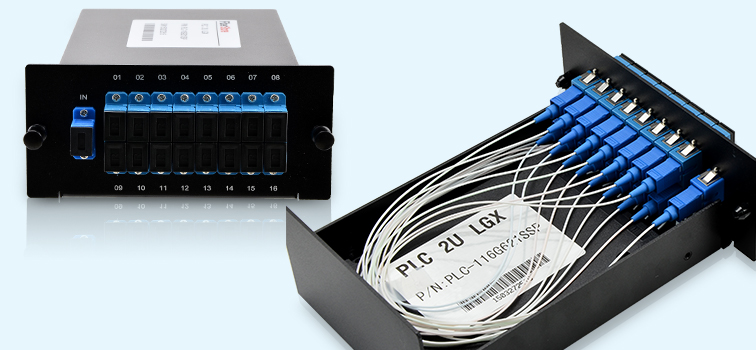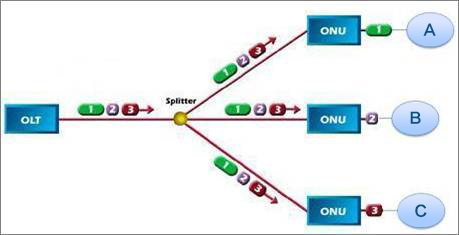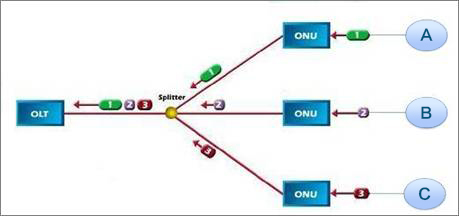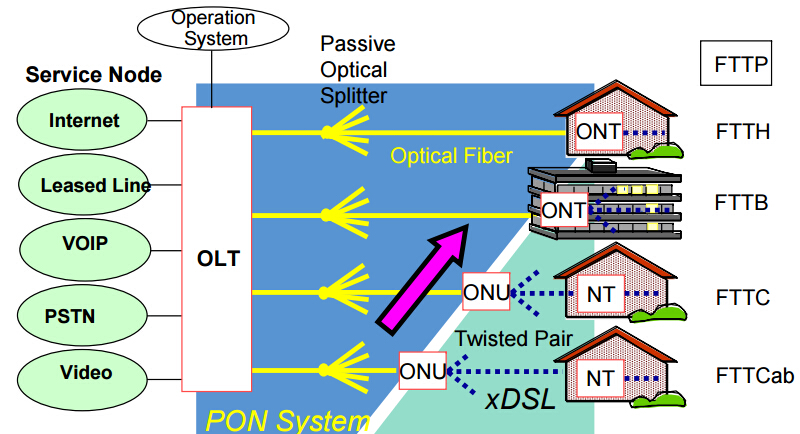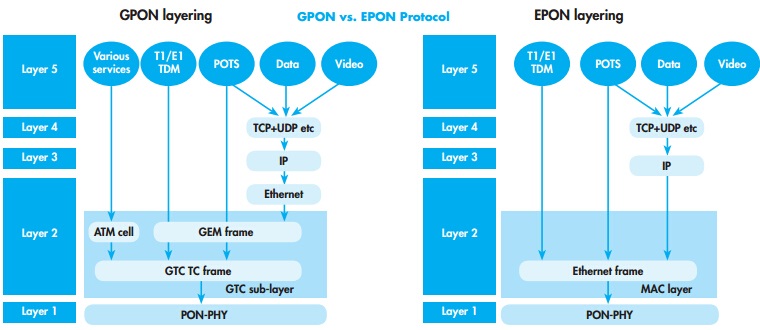PLC (Planar Lightwave Circuit) splitter is an important component in PON (passive optical network) where a single optical input is split into multiple outputs. This makes it possible to deploy a Point to Multi Point physical fibre network with a single OLT (optical line terminal) port serving multiple ONTs (optical network terminal). The most common split ratios are 1:N or 2:N. N represents the output ports, usually as 2, 4, 8, 16, etc. The optical input power is distributed uniformly across all output ports. The PLC splitter shares the cost and bandwidth of the OLT and reduces fibre lines. This article will tell about how to keep a high quality PLC splitter from manufacturing to testing sides.

PLC splitter is composed by many miniature parts. Among them, there are three main components: fibre array for the input and output, and the chip. These three main components decide whether the PLC splitter is of good quality or not. Let’s see the key manufacturing steps of a PLC splitter.
The PLC circuit chip is designed and embedded on a piece of glass wafer. Each end of the glass wafer is polished to ensure high precision flat surface and high purity. The V-grooves are grinded into a glass substrate. A single fibre or multiple ribbon fibre is assembled onto the glass substrate. This assembly is polished.
After preparing the three components, it’s time for alignment. The input and output fibre array is set on a goniometer stage to align with the chip. Physical alignment between the fibre arrays and the chip is monitored through the power level output from the fibre array. Epoxy is then applied to the fibre array and the chip to affix their positions.
The assembly will be placed in a UV chamber to be fully cured at a controlled temperature.
The bare aligned splitter is assembled into a metal housing where fibre boots are set on both ends of the assembly. A temperature cycling test will be done for a final screening to ensure the final product condition.
Optical testing items include insertion loss, uniformity and polarization dependent loss. This testing is to ensure the splitter compliant to the optical parameters in GR-1209 CORE specification.
Then how to determine the quality of a PLC splitter? The GR-1209 standards provides comprehensive optical performance criteria. The following will introduce these specifications such as optical bandpass, insertion loss, return loss, uniformity and directivity.
In a PON system, the downstream transmission uses 1490nm wavelength and 1310nm wavelength for the upstream transmission. Besides, the requirement for RF video overlay and network testing/maintenance should also be considered. The transmission wavelength for RF video is 1550 nm. And the wavelengths for networking testing and maintenance are 1550 nm and 1625 nm. So the standard opterating wavelength for a PON splitter is determined as 1260~1650 nm which covers most of the optical bands.
The optical splitter has the largest attenuation in a PON system. The insertion loss transfers from the input port to the output port. In order to conserve the power of a PON system, the insertion loss should be reduced to the least. There are formulas to calculate the maximum insertion loss of an optical splitter in a PON system according to the GR-1209 standard: 0.8 + 3.4 log2N (for 1xN optical splitter) and 1.0 + 3.4 log2N. To decide if the insertion loss is in the qualified range, you need to choose one formula to calculate.
Optical return loss is part of the power transferred from one input port back to the same input port or from an output port back to the same output port. A high return loss will influence the data transmission quality. So it’s important to minimize the noise to keep the PON system power for a better transmission.
Uniformity means the maximum insertion loss value between one input port and any two output ports or between two input ports and one output port. This can ensure that the transmission power at each splitter output port is the same in a PON system to simplify the network design.
Directivity is the part of power transferred from one input port to another input port or from an output port to another output port. For a 2xN optical splitter, when light injects into one of the input ports, light doesn’t only propagate out of the output ports. Some of the light propagates back through the second input port. And when the light injects into one of the output ports, light propagates back through the other output ports. In a bidirectional transmission system such as a PON, directivity is useful to reduce signal crosstalk. A high directivity value will increase the insertion loss due to the optical power loss.
FS.COM provides a variety of PLC splitters including 1×2, 1×4, 1×8, 1×16, 1×32, 1×64; 2×2, 2×4, 2×8, 2×16, 2×32, 2×64 in various package options, which offer cost-effective solutions for your applications. To ensure high performance, we have set a quality assurance program for PLC splitter. We always care every detail both in manufacture and testing. For detailed information, please contact us via sales@fs.com.

